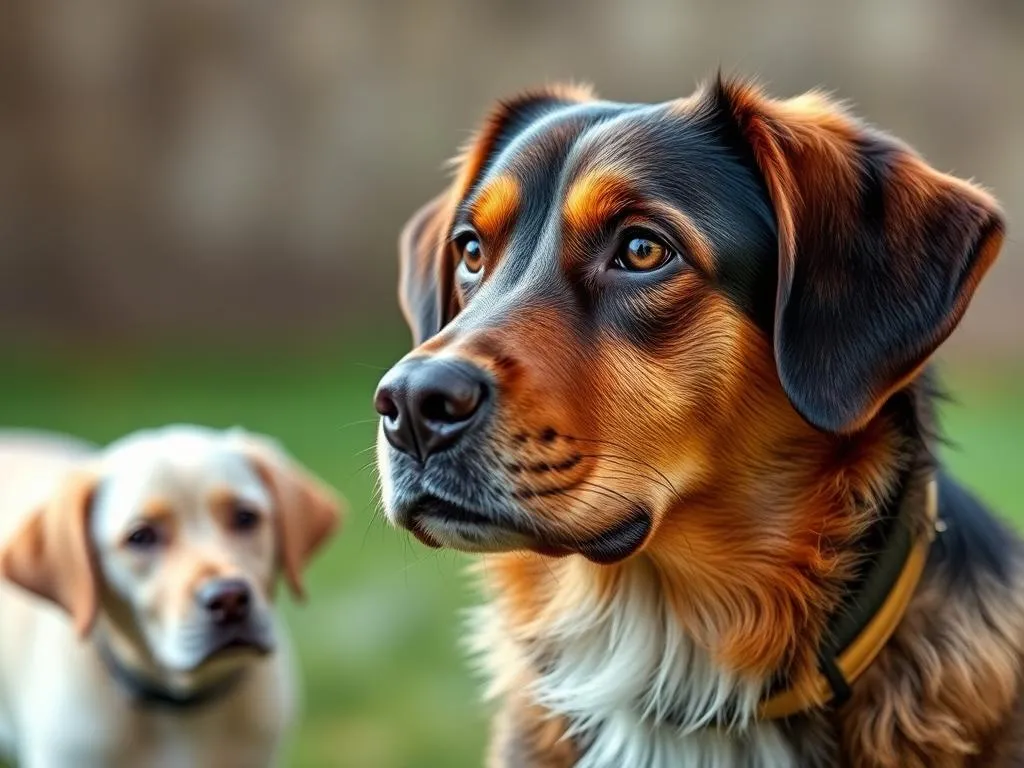
Guide dogs play an essential role in the lives of individuals with visual impairments, providing assistance, companionship, and independence. The selection of the right breed is crucial because their temperament, training, and physical characteristics can significantly impact their effectiveness as a guide. Understanding the various common guide dog breeds helps potential handlers make informed decisions about which dog may be the best fit for their lifestyle and needs.
Understanding Guide Dogs
Definition of Guide Dogs
Guide dogs are specially trained canines that assist individuals with vision loss in navigating their environments safely. By providing directional cues and alerting their handlers to obstacles, these dogs enhance mobility and independence. Their training involves teaching them to respond to verbal commands and signals while remaining focused and calm in various situations.
Historical Background
The history of guide dogs dates back to the early 20th century. The first formal guide dog training program was established in Germany during World War I to assist blinded veterans. Since then, the concept of guide dogs has evolved significantly, with many organizations worldwide now dedicated to breeding, training, and pairing guide dogs with those in need.
Benefits of Using Guide Dogs
The advantages of having a guide dog extend beyond mere mobility assistance. These dogs provide emotional support and companionship, significantly enhancing the quality of life for their handlers. For many, the bond formed with a guide dog can alleviate feelings of loneliness and increase confidence, enabling them to participate more fully in daily activities and social interactions.
Characteristics of Ideal Guide Dog Breeds
Temperament Traits
Ideal guide dog breeds share certain temperament traits essential for their work. These include:
- Intelligence: A high level of intelligence allows dogs to learn commands quickly and make decisions independently while navigating their environment.
- Calmness: A calm demeanor helps guide dogs remain focused and composed in various situations, from busy streets to crowded venues.
- Sociability: A friendly and sociable nature ensures that guide dogs can interact positively with their handlers and the public.
Size and Build
The size and build of a guide dog are crucial for their effectiveness. A medium to large dog is typically preferred, as they need to be sturdy enough to guide their handler safely. Additionally, the dog’s build should allow for ease of movement and the ability to navigate various terrains and obstacles.
Trainability
Trainability is perhaps the most vital characteristic for a guide dog. These dogs must possess an eagerness to learn and a willingness to work. The training process is rigorous, requiring dogs to master numerous commands and tasks to assist their handlers effectively.
Common Guide Dog Breeds
Labrador Retriever
Labrador Retrievers are among the most popular breeds for guide work, known for their friendly disposition and high intelligence. Their versatility makes them suitable for various tasks beyond guiding, such as search and rescue. Labs are eager to please, making them highly trainable, which is vital for their work as guide dogs. They are also large enough to provide stability and strength when needed.
Golden Retriever
Golden Retrievers are another favored breed for guide dogs, praised for their gentle nature and adaptability. Like Labs, they possess a friendly temperament and are highly trainable. Their intelligence and eagerness to work make them excellent companions for those with visual impairments. In addition to their guiding capabilities, Golden Retrievers often excel in therapy and assistance roles due to their loving demeanor.
German Shepherd
German Shepherds are well-known for their intelligence, loyalty, and versatility. They are often used in various service roles, including police and military work, as well as guide dogs. Their strong build and protective nature can provide a sense of security for their handlers. However, they require consistent training and socialization to channel their energy and intelligence effectively.
Boxer
Boxers may not be the first breed that comes to mind when considering guide dogs, but they are an option for some individuals. With a playful and lively spirit, Boxers can provide companionship and assistance. Their medium build allows them to navigate various environments, but they require thorough training to ensure they can perform guide work effectively.
Poodle
Both standard and miniature Poodles can serve as guide dogs, thanks to their intelligence and hypoallergenic coats. Standard Poodles, in particular, are often favored due to their larger size and trainability. Poodles are known for their quick learning abilities and can adapt well to various situations, making them suitable for guide work. Their friendly and sociable nature also helps them bond closely with their handlers.
Other Breeds
While Labrador Retrievers, Golden Retrievers, German Shepherds, Boxers, and Poodles are the most common guide dog breeds, other breeds can also serve effectively. Doberman Pinschers and Rottweilers, for example, have the intelligence and strength required for guide work, though they may not be as commonly used due to their specific training needs and temperament considerations.
Training Process for Guide Dogs
Puppy Training
The journey of a guide dog begins with puppy training, which focuses on early socialization and exposure to various environments. Puppies are introduced to different sounds, sights, and situations to help them become well-rounded individuals. Basic commands, such as “sit,” “stay,” and “come,” are taught during this stage.
Advanced Guide Dog Training
Once puppies reach a certain age and have a solid foundation in basic commands, they undergo advanced training, which includes specialized skills for guiding. This training involves teaching dogs to navigate obstacles, stop at curbs, and respond to various commands that help their handlers in everyday situations. The training is intense and often takes several months to complete.
Certification and Testing
After completing their training, guide dogs must pass a certification process to ensure they are fit for service. This testing evaluates their ability to perform essential tasks, respond to commands, and interact appropriately with their handlers and the public. Handlers also undergo training to learn how to work effectively with their guide dogs.
Choosing the Right Guide Dog
Factors to Consider
Selecting the right guide dog involves several factors, including lifestyle, living situation, and personal needs. Potential handlers should consider their activity level, the type of environment they live in, and any specific requirements they may have regarding size or temperament.
Consulting with Professionals
Working with professionals, such as guide dog trainers and organizations, is crucial in the selection process. These experts can help assess an individual’s needs and recommend suitable breeds and training programs. They can also provide valuable insights into the responsibilities and commitments involved in having a guide dog.
Adoption vs. Breeding
Individuals may consider adopting a guide dog or obtaining one from a breeder. Adoption can be a rewarding option, as many trained dogs are looking for homes, but it may come with its own set of challenges. On the other hand, getting a dog from a breeder allows for more control over the dog’s lineage and training, but it may require a longer waiting period.
Real-Life Stories and Testimonials
Success Stories
Many inspiring stories highlight the incredible bond between guide dogs and their handlers. For example, one woman shared how her Labrador Retriever not only helped her navigate her daily life but also encouraged her to participate in social events she previously avoided. Such partnerships often lead to newfound independence and confidence.
Challenges Faced
While guide dogs provide immense support, challenges can arise. One handler recounted the initial difficulties she faced when her German Shepherd became distracted by other dogs during walks. Through consistent training and support from professionals, she was able to overcome these challenges, ultimately strengthening her bond with her guide dog.
Impact on Lives
The impact of guide dogs on their handlers’ lives is profound. Many individuals express gratitude for the freedom and companionship their dogs provide. Testimonials often highlight how guide dogs have transformed lives, enabling individuals to regain independence and actively participate in their communities.
Conclusion
Choosing the right common guide dog breeds is a vital decision that can significantly affect the quality of life for individuals with visual impairments. Understanding the characteristics, training processes, and real-life experiences associated with guide dogs can empower potential handlers to make informed choices. By considering the information presented, individuals can find a guide dog that meets their unique needs and enhances their independence.
FAQs
Common Questions about Guide Dogs
-
What breeds are typically used as guide dogs?
Common breeds include Labrador Retrievers, Golden Retrievers, German Shepherds, Boxers, and Poodles. -
How long does it take to train a guide dog?
The training process typically takes about 18 to 24 months, including puppy training and advanced guide work. -
Can any dog be trained as a guide dog?
While many breeds can potentially be trained as guide dogs, not all dogs possess the temperament or trainability required for this role.
Myths and Misconceptions
-
Myth: Guide dogs are just pets.
Reality: Guide dogs are highly trained service animals that assist individuals with visual impairments in navigating their environments. -
Myth: Guide dogs can work without any commands.
Reality: Guide dogs require specific commands and training to perform their tasks effectively and safely. -
Myth: Guide dogs are always on duty.
Reality: Guide dogs need downtime and should not be disturbed while they are working. Handlers have the responsibility to ensure their dogs are well cared for at all times.
By understanding more about common guide dog breeds, the training process, and the profound impact these dogs have, individuals can better appreciate the vital role guide dogs play in enhancing the lives of those with visual impairments.









